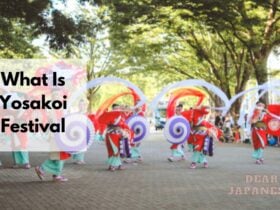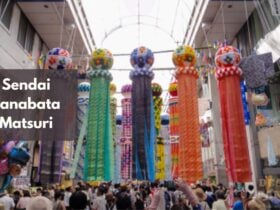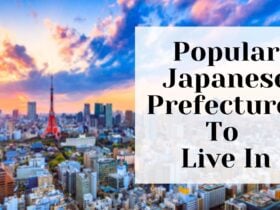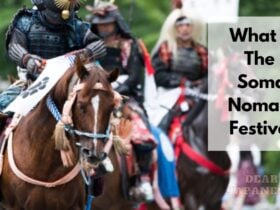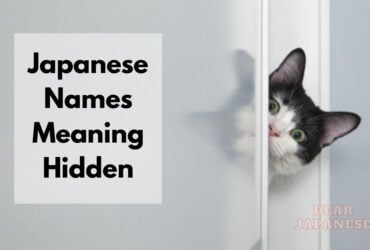Embark on a journey through the annals of Japanese history as we delve into the life and legacy of Emperor Jimmu, the legendary founder of Japan. Uncover his divine lineage, his epic eastward expedition, and his enduring impact on Japanese culture and identity.
From the mists of mythology emerges Emperor Jimmu, the fabled first emperor of Japan, a figure as revered as he is enigmatic.
His reign, traditionally dated to 660 BC, marks the dawn of Japan’s imperial lineage, a lineage that stretches unbroken to this day.
Steeped in Shinto mythology, Jimmu’s story intertwines with the gods and deities of Japan’s ancient pantheon, painting a vivid tapestry of divine intervention and human endeavor.
Emperor Jimmu – The Founder of Japan
What Did Emperor Jimmu Do For Japan?
Emperor Jimmu is the legendary first emperor of Japan, according to the Nihon Shoki and Kojiki, two ancient Japanese texts.
His accession is traditionally dated as 660 BC. In Japanese mythology, he was a descendant of the sun goddess Amaterasu, through her grandson Ninigi, as well as a descendant of the storm god Susanoo.
Emperor Jimmu is credited with founding the Japanese state and establishing the Yamato dynasty, which ruled Japan for over 1,500 years.
He is also said to have introduced many important cultural and political institutions, including the Japanese calendar, the imperial court, and the concept of the emperor as a divine ruler.
While there is no archaeological evidence to support the existence of Emperor Jimmu, he remains a revered figure in Japanese culture and is seen as the embodiment of the Japanese nation.
His story is taught in schools and his image is often used in government and military ceremonies.
History Of The Emperor Of Japan
The monarchy of Japan is known to be the oldest continuous and hereditary monarchy in the world with 126 monarchs from Emperor Jimmu to Emperor Naruhito, the present Japanese emperor.

The Japanese empire is ruled by their monarch who is the head of the Imperial Family, also known as the Yamato Dynasty.
Under the Japanese Constitution, the emperor is the head of the Japanese state and he will be the governing power of the line of succession and he will hold the sole sovereign power.

The Japanese emperor is called “Tenno” and as per the Japanese religion “Shinto”, he is considered to be the direct descendant of Amaterasu, the sun goddess.
The Yamato Dynasty is one of the oldest dynasties in the world and is known to have its historic origins between the 3rd to the 6th centuries Anno Domini.

According to the Japanese chronicles, it is known that Japan was founded by Emperor Jimmu, in 660 BC.
In Japan, the emperor ascends the Chrysanthemum Throne (also known as the ‘Takamikura’ Throne) during his ascension ceremony.
This throne is now kept in the Imperial Palace in Tokyo and is still used for the enthronement ceremonies, the last enthronement ceremony being that of the present Japanese emperor, Naruhito, in the year 2019.

Emperor Naruhito is considered to be the 126th monarch to ascend the Chrysanthemum throne.
The Chrysanthemum Throne
Well, if you want to know more about the Japanese monarchy, then there is one thing that you cannot miss and that is the legendary history of the Chrysanthemum Throne.
The Takamikura (the real throne) which was located at the Imperial Palace of Kyoto is known to be the oldest ever surviving throne used by a monarchy, but there have been similar models made over the years built for the purpose of enthronement.
Presently, the latest model of the throne that sat in Kyoto’s Imperial Palace was built for Emperor Taisho, for his enthronement ceremony in the year 1912.

The throne is placed on a dais that is octagonal in shape and is separated by a curtain, apart from the rest of the room.
There is a sliding door that hides the emperor seated on the throne and this door is called as the ‘Kenjo no shoji’. This sliding door has painted images of 32 celestial saints.

Later on, during the enthronement of the present emperor Naruhito and his preceder Akihito, the Takamikura was refurbished and reassembled and was then placed in Tokyo at the Seiden State Hall of Tokyo’s Imperial Palace, for their enthronement ceremonies.
Emperor Jimmu: The Founder Of Japan
According to the history of Japan, the very first emperor and founder of Japan was Emperor Jimmu, who began his reign in the year 660 BC.
He was known to be the descendant of Amaterasu, the goddess of the sun and also a descendant of Susanoo, the god of the storm.

This is why legend states that Emperor Jimmu was actually a connection between the Japanese ruling dynasty and the divine ancestors of the Japanese people.
This is why, before Emperor Jimmu ascended the throne, it is said that the time before his ascension was called as the “Age of Gods”.
Emperor Jimmu And The Yamato Dynasty
Emperor Jimmu was born in the southern part of Kyushu, in a place called Takachiho. His posthumous name meant “God-warrior” or “Divine might”.
He was a younger child and had older brothers. One of his brothers, Its use no Mikoto decided to lead the migration of their clan to the eastern part, to be able to find a more appropriate location to be able to administer the country.
But unfortunately was killed in a battle during this migration, by Nagasunehiko, a local chieftain.
This is when Jimmu had to take over the situation along with the guidance of Yatagarasu, a three-legged crow, and reached a place called Yamato.
But again, upon reaching Yamato they had to battle Nagasunehiko, but this time round, Jimmu emerged victorious.
After Jimmu won the battle, the rest of the clans began to surrender leaving Jimmu to become the official guardian and custodian of the “Sanshu no Jingi” (a sacred treasure), that came from the goddess of the sun, Amaterasu herself.
Thereafter, Jimmu’s main accomplishment was a military campaign that he launched from Hyuga, where he captured the whole of Yamato and soon made it his headquarters.
No sooner was Jimmu coronated in the prefecture of Nara, as the Emperor of Japan and continued to rule until his death. It is known that Emperor Jimmu died at the age of 126 years.
After Emperor Jimmu’s death, his son Suizei was his successor to the throne.
In the present day, a public holiday called ‘Kigensetsu’, today called ‘National Foundation Day’ is celebrated every year to commemorate the anniversary of Emperor Jimmu’s ascension to the throne over 2, 500 years ago.
Emperor Jimmu’s Existence: Fact Or Myth?
The question that still remains till date is whether Emperor Jimmu actually existed because there is no concrete evidence that he did, except a mention in the chronicles of Japan.
Some scholars still think that Emperor Jimmu’s existence is a myth and that the founding of the Yamato dynasty along with the first few successors of his, is all a myth and could have been made up by the writers who wrote the chronicles of Japan called ‘Nihon Shoki’ and ‘Kojiki’.
Some scholars also think that these emperors could have associated themselves with mythical figures to legitimize their reign.
Emperor Sujin, the 10th Japanese emperor, who ruled during the 1st century BC, is known to be the first officially recognized emperor of Japan.
Emperor Jimmu – The Founder Of Japan: FAQs
Who are “shoguns” in Japan and how are they different from emperors?
Shoguns were leaders who were appointed by the emperor as the military ruler and they were made to work with civil servants. These shoguns worked for hand in hand with the emperors.
The shoguns controlled the military, foreign policy and also the feudal patronage, while the rule of the emperor was mainly ceremonial.
These shoguns were known to have absolute power and were considered to be one of the most powerful men in Japan. He was considered to be the ruler of the nation in all actuality, while the emperor was considered to be just a figurehead.
The first shogun was Tajihi no Agatamori in 668 BC, but in the present day, there are no more shoguns in Japan and the Shogunate ended with Prince Tokugawa Yoshinobu, the last shogun, over a 100 years ago.
How long can a Japanese emperor rule?
In all realness, Japanese emperors once ascended the throne have to reign until their death.
This was to avoid a power struggle between those emperors who had retired and the present emperor.
But over the years, there have been changes and exceptions made in the law of Japan and the emperor can reign until his death or his abdication.
But very rarely did an emperor abdicate his throne and continued to rule until his death.
The last abdication in Japan was in 2019 that of Emperor Akihito (becoming one of the very first emperors to step down from his throne in over 200 years), who abdicated his throne due to health-related issues.
Thereafter, his son Naruhito ascended the throne and is presently the emperor of Japan.
How do Japanese emperors get chosen?
As per the Constitution of Japan, also called as the Meiji Constitution, the law states that the Imperial Throne of Japan will be ascended by the imperial male descendant by virtue of succession.
The law is currently limited to only male successors in a Japanese families.
Where does the Japanese emperor reside?
The ruling Japanese emperor currently resides in the capital of Japan, at the Imperial Palace of Tokyo.
This palace is also called ‘Kokyo’ and it is located at the former site where the Edo castle was located.
It is also called as the “Imperial Residence” because it is the residence of the ruling Japanese emperor.
Previously, the emperors of Japan resided in the ancient capital of Japan, Kyoto, for over ten centuries.
What was Emperor Jimmu famous for?
Emperor Jimmu was the legendary first emperor of Japan, who according to mythology, founded the imperial dynasty and established the first permanent capital of Japan at Kashihara in 660 BC.
He is a central figure in Japanese history and a symbol of Japanese national identity, celebrated through festivals and ceremonies, including the Emperor Jimmu Festival held in Kashihara on February 11th.
How long did Emperor Jimmu rule for?
According to Japanese mythology, Emperor Jimmu is said to have ruled Japan for 75 years, from 660 BC until his death in 585 BC.
However, it is important to note that much of Emperor Jimmu’s life and reign is shrouded in legend and myth, and there is limited historical evidence to support the accuracy of this account.
Who was Jimmu a descendant of?
Emperor Jimmu is believed to be a direct descendant of the sun goddess Amaterasu, who, according to Japanese mythology, was one of the most important deities in the Shinto religion.
This connection to Amaterasu is one of the key elements of Emperor Jimmu’s mythological story, as it was believed to have given him divine authority and legitimacy to rule as the first emperor of Japan.
It’s worth noting, however, that as with many aspects of Japanese mythology, the historical accuracy of this genealogy is uncertain, and there is limited historical evidence to confirm Emperor Jimmu’s actual ancestry.
The Final Takeaway
The monarchy of Japan is long and definitely one that is legendary! It started with Emperor Jimmu in 660 BC and lives on until the present day, with Emperor Naruhito at the throne.
But the question that remains is, will the legacy of Japan’s monarchy continue over the years to come due to the shortage of eligible successors to the throne?
Well, undoubtedly, this is the dilemma that the Japanese monarchy is facing at the moment and clearly, it looks like only time can tell whether the ancient renowned dynasty will soon come to an end or not!
Also Read:


